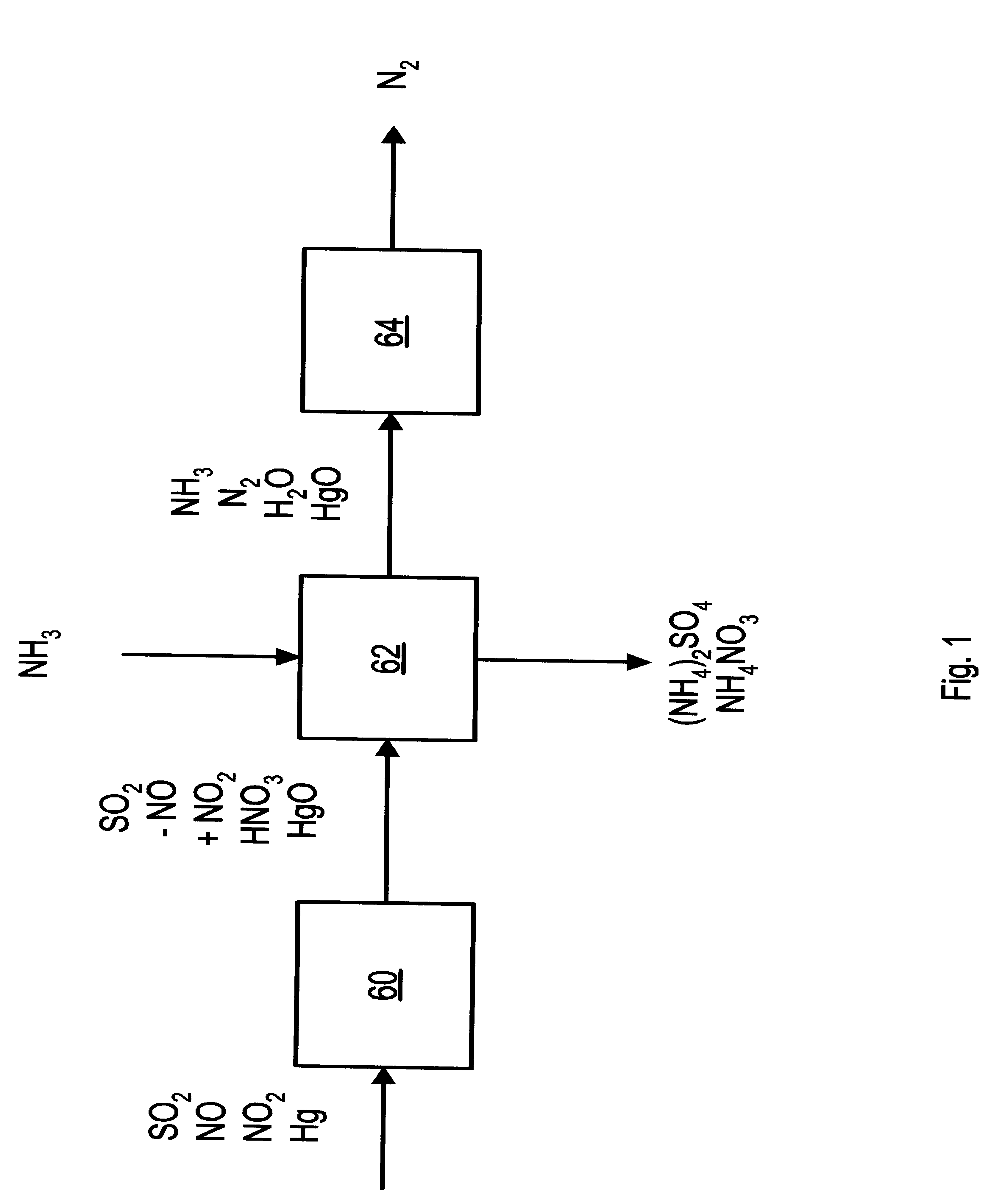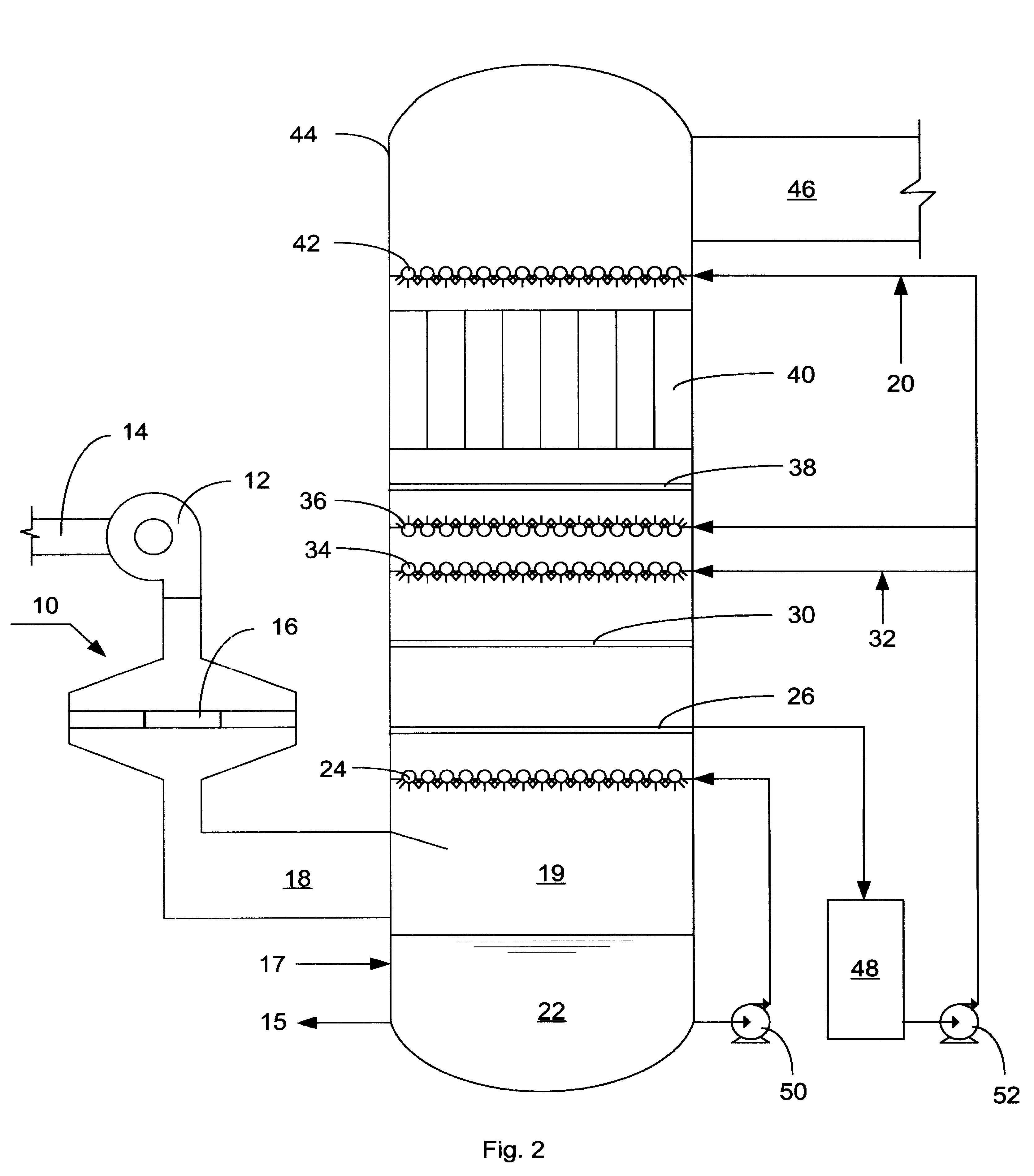NOx, Hg, AND SO2 REMOVAL USING AMMONIA
- Summary
- Abstract
- Description
- Claims
- Application Information
AI Technical Summary
Benefits of technology
Problems solved by technology
Method used
Image
Examples
example 2
[0042] An absorption test was done for the scrubbing step of the process of the present invention starting with water and a flue gas stream consisting of 13% v / v moisture, 17 ppmv NO, 267 ppmv NO.sub.2, 1360 ppmv SO.sub.2, 6% v / v O.sub.2 and balance N.sub.2. Ammonia and ammonium thiosulfate were added to maintain a pH of 6.8 and a thiosulfate concentration of 2.5%, and the concentrations of sulfite and sulfate in the system were allowed to build to steady state. The NOx removal rate was 80% w / w at concentrations of SO.sub.3.sup.2-, SO.sub.4.sup.2-and S.sub.2O3.sup.2-of 0.7% w / w, 2.5% w / w, and 0.5% w / w respectively.
example 3
[0043] Tests were conducted in a laboratory test facility for the NO oxidizing, scrubbing, and aerosol removal steps of the process of the present invention. The equipment consisted of a simulated flue gas delivery system, a coaxial cylinder DBD reactor, a packed column scrubber and a tubular WESP. The following is an example of data obtained in the lab test facility.
[0044] Simulated flue gas was delivered to the DBD reactor at a flow rate of 14 scfm, a temperature of 290.degree. F. and with the following composition: 6.2% v / v O.sub.2, 14.2% v / v CO.sub.2, 8.2% v / v H.sub.2O, 20 ppmv CO, 250 ppmv C.sub.2H.sub.4, 1740 ppmv SO.sub.2, and 259 ppmv NO.sub.x. Gas velocity through the discharge reactor was 50 ft / sec with discharge power level of 140 watts.
[0045] Gas from the discharge reactor entered a 4" ID packed column scrubber, packed with 1 / 2" INTALOX saddles to a depth of 4 feet. Liquid was introduced at the top of the scrubber at a flow rate of 0.33 gpm (L / G=20 gpm / kacfm). Aqueous am...
PUM
 Login to View More
Login to View More Abstract
Description
Claims
Application Information
 Login to View More
Login to View More - R&D
- Intellectual Property
- Life Sciences
- Materials
- Tech Scout
- Unparalleled Data Quality
- Higher Quality Content
- 60% Fewer Hallucinations
Browse by: Latest US Patents, China's latest patents, Technical Efficacy Thesaurus, Application Domain, Technology Topic, Popular Technical Reports.
© 2025 PatSnap. All rights reserved.Legal|Privacy policy|Modern Slavery Act Transparency Statement|Sitemap|About US| Contact US: help@patsnap.com



